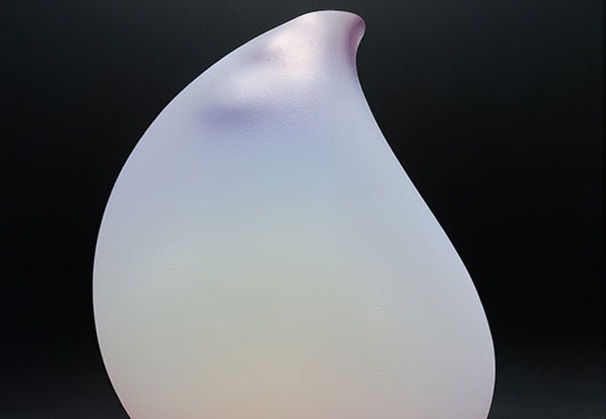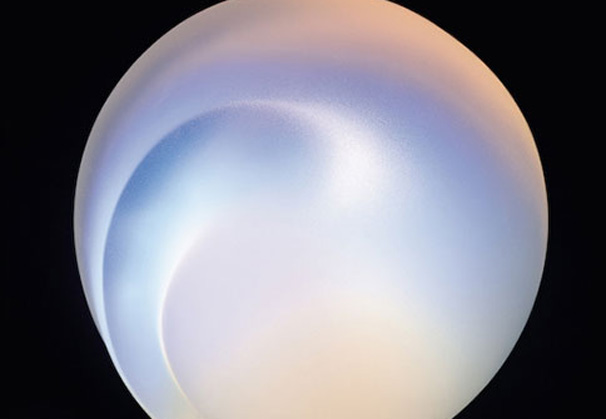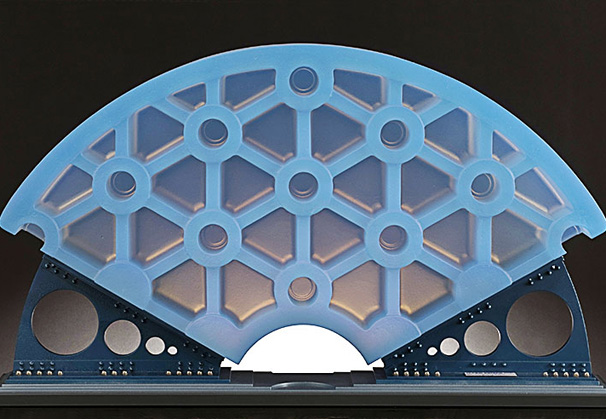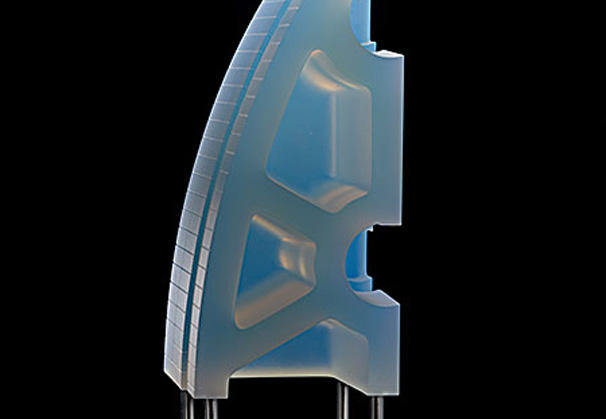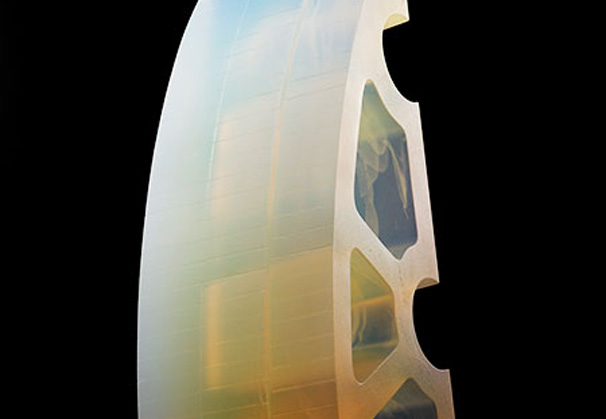Artist of the Month
June 2010

Mark Peiser
Mark Peiser’s new Palomar Series represents a culmination of almost every technique Peiser has invented, explored, and mastered throughout his career, which has spanned over 40 years. The Palomar Series is based on the artist’s interpretation of the Palomar Mirror created in 1947. At its time of inception, the Palomar Mirror was the largest optical telescope in the world, allowing humanity to look further into the universe than ever before. Much like Peiser’s work, this structure pushed both the technical boundaries and ideals of its time.
Mark Peiser

Artist Statement:
"For me, expanding my vocabulary usually implies a development of technique. The fact that I've spent so much energy seeking technical solutions is not because I love frustration – it's to accomplish my visions in what to my imagination is the simplest most direct, most knowing way. For me, technique is not cheap – it's imperative.
Glass is a tough lover, fragile and unforgiving, demanding and costly, high maintenance. But glass has no imagination or hidden agenda. If you are attentive, learn its ways, are understanding in what you ask of it and treat it with care, its spirit emerges.
The Palomar Mirror, the largest single glass casting achieved in its time, allowed humanity to look further into the universe than ever before, bringing us closer to an understanding of our existence than any previous astronomical achievement. By allowing for the development of astrophysical theories of outer space, the mirror itself would give structure and form to the unknown void—it would transform the negative into positive space. At the time, many worried that this transformation would reveal too much, that seeing closer to the origin of time would devalue the human experience, taking mystery away from the cosmos.
And yet, the more we see the more we wonder. The further we explore, the less we feel we know. Yes, the mirror has allowed us to see the rainbow of colors in the stars, to explore island universes, to learn of black holes and dark matter, but this has not led to simplified understanding. Rather, we have seen enough to begin to pose new questions.
Positive space, the known, is a structure from which we can begin to imagine the unknown safely. The negative space, the void, is the place of our dreams, our imagination and adventures. And it is the union of both which adds beauty, awe and mystery to all things.
The design of the Palomar Disk was defined by physics. The negative space of its structure creates an environment revealing the physics of light. As a glassmaker, I strive to realize such spaces. And as an individual, I seek them as a sanctuary.
About Mark Peiser
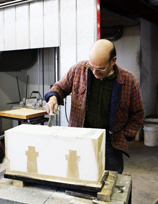 An innovative artist, Mark Peiser continually has pushed the limits of glass to create some of the best art glass being made in the United States. A perfectionist, both in his techniques and aesthetics, he has exquisitely crafted a number of highly collected series -- from his Innerspace pieces, Paperweight vases and opaque geometric and image vessels to functional "spaghetti" bowls.
An innovative artist, Mark Peiser continually has pushed the limits of glass to create some of the best art glass being made in the United States. A perfectionist, both in his techniques and aesthetics, he has exquisitely crafted a number of highly collected series -- from his Innerspace pieces, Paperweight vases and opaque geometric and image vessels to functional "spaghetti" bowls.
An artist whose spirit of technical ingenuity and innovation is central to his work, Peiser has exquisitely crafted a number of highly collected series, from his Innerspace pieces, paperweight vases, opaque geometric and image vessels, to cold steam cast vessels. To view a video of the artist making work using the cold stream casting technique, please click here.
Peiser began formulating and melting opal glasses for the Forms of Consciousness Series in 2001.The methods and techniques developed during this experimental process directly led to the creation of the glass used in Peiser’s Palomar Series. Peiser's Section One, Veils from the Palomar Series was recently acquired by the Corning Museum of Glass for their permanent collection.
Peiser received a BS degree in design from Illinois Institute of Technology and has received a number of awards throughout his career, including being named honorary fellow by the American Craft Council, grants from the National Endowment for the Arts and Louis Comfort Tiffany Foundation and Asahi Shinbun Prize, Japan Glass Artcrafts Association. He was the first glass resident craftsman at Penland School of Crafts in the late '60s.
Peiser's work is in the collections of the Art Institute of Chicago (IL), Birmingham Art Museum (AL), Cooper-Hewitt National Design Museum (NY), Corning Museum of Glass (NY), La Galerie Internationale du Verre (France), Glasmuseum (Denmark), High Museum of Art (GA), Hokkaido Museum of Modern Art (Japan), Hunter Museum of American Art (TN), Milwaukee Art Museum (WI), Mint Museum of Craft + Design (NC), Museum of Arts & Design (NY), National Museum of American History, Smithsonian Institute (DC), Santa Barbara Museum of Art (CA), Toledo Museum of Art (OH) and Tokyo Museum of Modern Art (Japan).
Acknowledgment of Gallery:
We are grateful to Wexler Gallery (Philadelphia) for providing the materials for the Artist of the Month.

The Art Alliance for Contemporary Glass (AACG) is a not-for-profit organization and leading resource for glass collectors, art enthusiasts, artists, gallerists, museum personnel, and educators on all things related to glass art. AACG provides a collaborative place for robust conversations about glass art, including its production, techniques, and trends. We also encourage and support the glass community through annual grants and artist scholarships.





